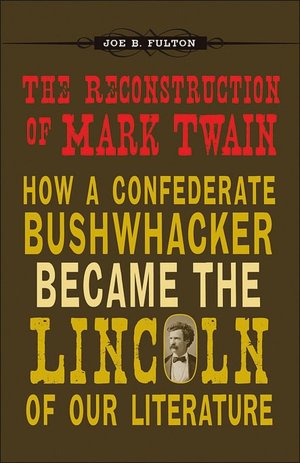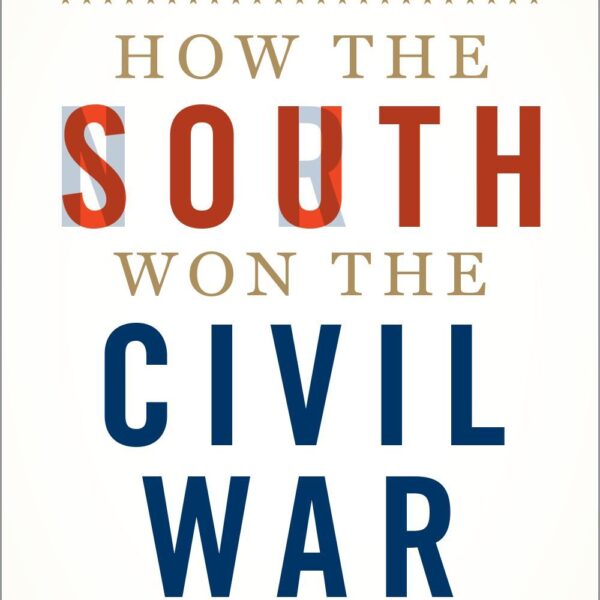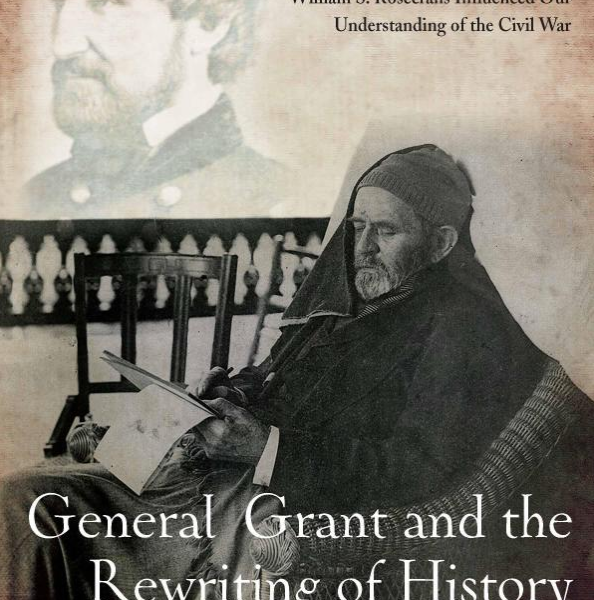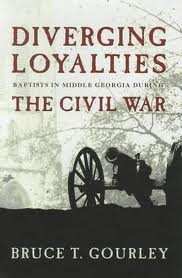Failure to Pursue: How the Escape of Defeated Forces Prolonged the Civil War by David Frey. McFarland and Company, 2016. Paper, ISBN: 978-1476666693. $39.95.
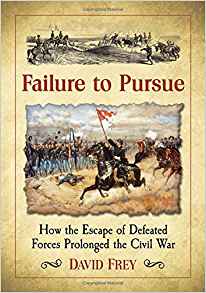 Since the end of the American Civil War, a number of arguments have emerged about why the Union was victorious. Indeed, an entire school of historical memory—the Lost Cause—emerged as a response to this question. Although a number of different reasons have been named for the Union victory, few writers and historians have tackled an even larger question: why did the war last for four years, in the process costing more than 700,000 American lives? This question is one that David Frey, a former Marine and retired attorney, attempts to answer in his book Failure to Pursue.
Since the end of the American Civil War, a number of arguments have emerged about why the Union was victorious. Indeed, an entire school of historical memory—the Lost Cause—emerged as a response to this question. Although a number of different reasons have been named for the Union victory, few writers and historians have tackled an even larger question: why did the war last for four years, in the process costing more than 700,000 American lives? This question is one that David Frey, a former Marine and retired attorney, attempts to answer in his book Failure to Pursue.
The length of the war, however, is just one of a number of questions Frey attempts to address. In the process of exploring the failed pursuit of Civil War armies, Frey also tries to explain the improvement of Union cavalry and its use throughout the war, especially in the eastern theater. Additionally, he addresses the various strategic visions of the commanders in the Union and Confederate forces, while also focusing on the visions of Abraham Lincoln and Jefferson Davis.
To explore these concepts, Frey traces tactical and strategic decisions throughout both theaters of the war, based almost exclusively on secondary sources—with the memoirs of Ulysses S. Grant, William T. Sherman, and E. Porter Alexander being the exceptions. Starting with a chapter on antebellum military thought, Frey then jumps into many of the major campaigns of both the western and eastern theaters—with the exception of Fredericksburg and Chancellorsville—for the rest of the book. In addition to addressing the individual campaigns, Frey includes multiple chapters on cavalry developments in the east, which are the strongest pieces of the monograph. Primarily, these chapters provide general overviews of the individual battles and then briefly explore how the armies pursued their defeated foes in the aftermath. Frey employs a fairly traditional lens when discussing the military concepts toward tactics and strategy. He believes that the introduction of rifled muskets and the Minié ball increased the range of fighting on the battlefields, and that trenches increased the defensive nature of the conflict. Mainly, Frey concludes that four factors explain the failure of Civil War armies to destroy a defeated force: exhaustion in both armies after a fight; commanders’ inabilities or lack of interest in pursuing a defeated enemy; the lack of ambitious subordinate commanders necessary to push after the armies; and the ineffective use of cavalry.
Unfortunately, Frey never fully defines what he means by the “pursuit” of a defeated army, which makes his overall concept murky. At times, it is clear when he is talking specifically about a pursuit, such as his chapter on the Confederate retreat back into Virginia after the Battle of Gettysburg between July 4 and July 14, 1863. At other points, however, he includes certain events that many consider part of the main battle as a “pursuit” of a defeated army, such as General James Longstreet’s counterattack against the Union forces at the Second Battle of Bull Run (Manassas) in August 1862. In the first case, Frey can clearly show how the problems he points out emerged during that pursuit against the Confederates in July 1863. The second case, however, does not truly support his effort, as it was part of the ongoing battle. Because of this, a sense of speculation about what could have happened tends to emerge throughout the narrative.
Factual, spelling, and grammatical errors also can be found throughout the book, including in the endnotes. For example, in his chapter on First Bull Run (Manassas), Frey references a geographical point that he calls “Howard Hill” (151). It seems that he was making reference to Matthew’s Hill—the initial point of contact between the two armies—but no rise at Manassas is known as Howard Hill. Similarly, at one point, he refers to Phil Sheridan as “Sherman” (301). And in one endnote, he names the author of a book on Second Manassas as “Patrick C. Patchan,” whereas the author’s actual name is Scott C. Patchan (377n2). Though seemingly nitpicky, these types of errors influence the book’s overall impact.
Frey makes a valiant attempt at providing an answer to the question of why the Civil War took four years. In the process, he provides a general overview of most major campaigns of the conflict. Yet, a number of questions about the pursuit of defeated armies in the war remain unanswered.
Michael Burns is a graduate student in history at Texas Christian University.

